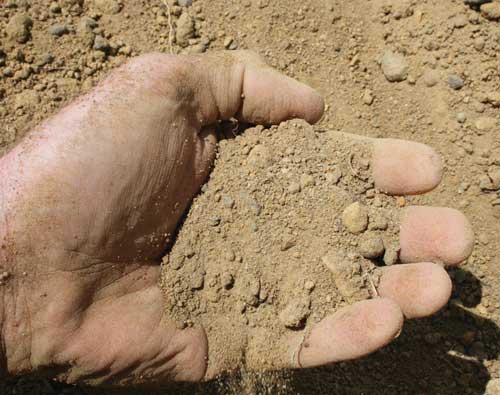January 27, 2011

Recent rainfall has improved the outlook for the upcoming crop growing season, as just a few weeks ago we were very dry in the upper 3-4 inches of our top soils and those wanting to plant spring wheat were sitting on the sidelines waiting to see if the rains would ever come.
Now that they did come and continued for several days, some spring wheat will not be planted due to wet soils and the inability to plant, thus the decision to look at other crop options has been made.
With wet soils, it is hard not to get excited and want to put seed in the ground, but we need to be patient, and wait until optimum conditions exist for quick emergence before we pant expensive seed. Moreover, weather forecasts indicate cooler than normal temperatures for the coming weeks.
Corn, typically the earliest spring planted crop, responds primarily to temperature and is not controlled by day length, so calendar date is not as important as the soil temperature. Good germination and emergence are expected when the soil temperature at the 2-inch depth is 55 degrees F by 9:00 a.m. for three consecutive days.
The normal last freeze date in the Corpus Christi area is February 9, and most folks begin planting corn here around February 14. Corn can typically withstand frost with little economic injury early in its growth stage; however, severe frosts later in corn development can be quite destructive.
Sunflowers will germinate readily at 45-50 degrees F, and can be planted successfully earlier than corn. Sunflowers are more tolerant to frost than corn and plants with fewer than six leaves are usually resistant to frost. Those early planted sunflowers, i.e. early February, could be mature and ready to harvest by early June.
Grain sorghum
Grain sorghum, the most popular crop in the Coastal Bend, is typically planted in mid-to late February. The ideal temperature for sorghum germination and emergence is 70 degrees F. Although germination can occur at temperatures below 50 degrees F, emergence is delayed. For optimum germination and emergence, one should delay planting until the 5-day average daily soil temperature at the two-inch depth reaches 60 degrees F. If you must plant in a cool wet soil, plant shallow and use fungicide seed treatments.
For sorghum, the time from planting to emergence usually ranges from 5 to 10 days, depending on growing conditions. Slow emergence can result in uneven, poor plant stands that will result in reduced yields.
Prior to emergence, the plant is totally dependent on food reserves in the seed from the endosperm for survival, so slow emerging plants risk depleting their food reserves, which are important in early plant growth.
One source of soil temperature information is http://cwp.tamu.edu/ called the Crop Weather Program (CWP). This on-line decision support system relies on an automated network of weather stations spanning several counties along the Texas Coastal Plains. The weather stations monitor in-field environmental conditions that have a direct impact on crop performance cropping activities. This tool is maintained by Texas AgriLife Research here in Corpus Christi.
You May Also Like




